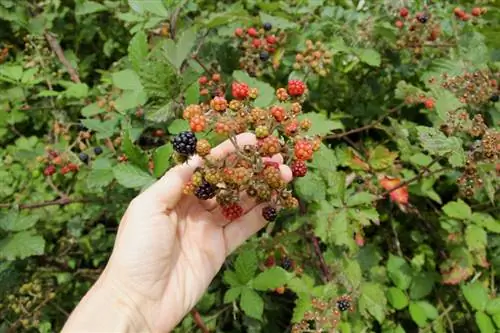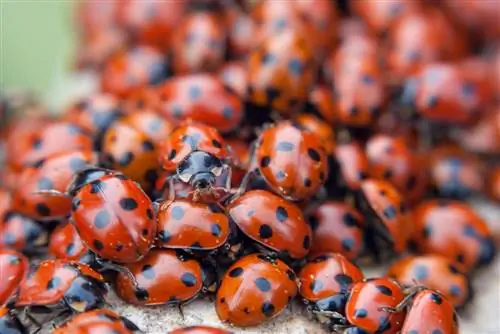- Author admin [email protected].
- Public 2023-12-16 16:46.
- Last modified 2025-01-23 11:22.
Mistletoe grows in the crowns of numerous trees, how it gets there is a mystery to some. At Christmas time, mistletoe is available for purchase and is well paid for. So is mistletoe a parasite or a lucrative ornamental plant?

How can you grow mistletoe yourself?
To specifically breed mistletoe, remove the sticky seeds from the berries and press them into the fork of a suitable host tree, such as an apple tree, linden tree or poplar. It takes a few years until the first flowers bloom and requires patience.
Are there different types of mistletoe?
There are several hundred species of mistletoe that live as semi-parasites on various trees. They can be roughly classified into three subspecies, their names provide information about the host trees: pine or pine mistletoe (bot. Viscum laxum), fir mistletoe (bot. Viscum abietis) and hardwood mistletoe (bot. Viscum album), the most common type.
How is mistletoe grown?
To propagate mistletoe specifically, all you need is a few berries from which you can remove the sticky seeds. You then simply “stick” these into the fork of a tree; pressing firmly is sufficient. The only important thing is that you choose a suitable host tree. For hardwood mistletoe, these are apple trees, linden trees, hornbeams, alders and poplars.
Then you just need a lot of patience. Only after one or two years does a bulge in the “vaccinated” branch fork show that mistletoe wants to grow here. It will be a few more years before the first flowers appear. Incidentally, mistletoe is considered slightly poisonous, but the berries are considered non-toxic. However, consumption is strongly discouraged as the berries easily get stuck in the throat.
Where do I get mistletoe berries?
Mistletoes are not protected and can also be collected in nature. But because they grow high up in the trees, they are not so easy to reach. The berries from mistletoe, which hang over the door frame for Christmas decorations, are also suitable for propagation.
The most important things in brief:
- Reproduction or spread usually by birds
- Targeted propagation possible, with little effort
- place on the right host tree depending on the species
- particularly suitable host trees for hardwood mistletoe: apple tree, lime, hornbeam, alder and poplar
- slower growth of the host tree
- very lengthy, takes a few years until the first flowering
Tip
If you want to grow mistletoe in your apple trees, keep in mind that the yield of these trees will decrease.






